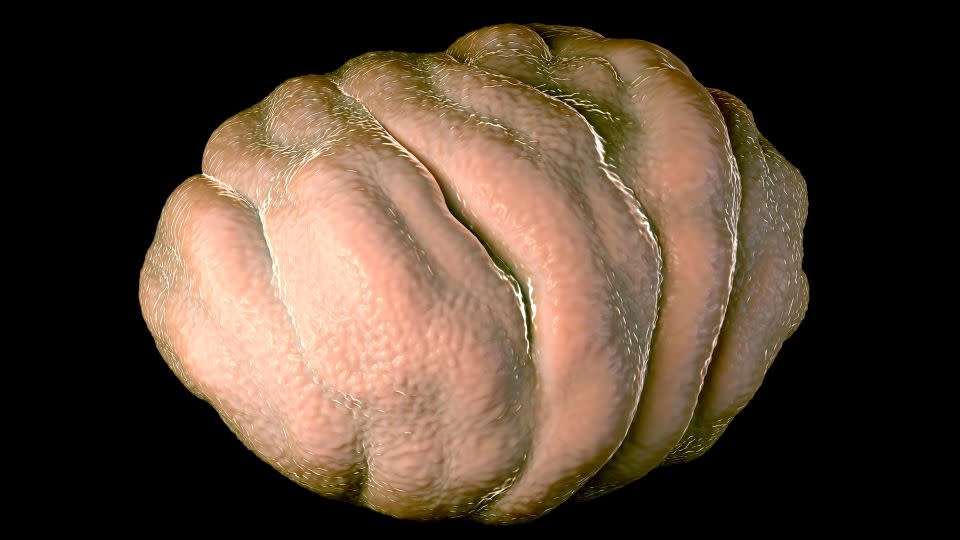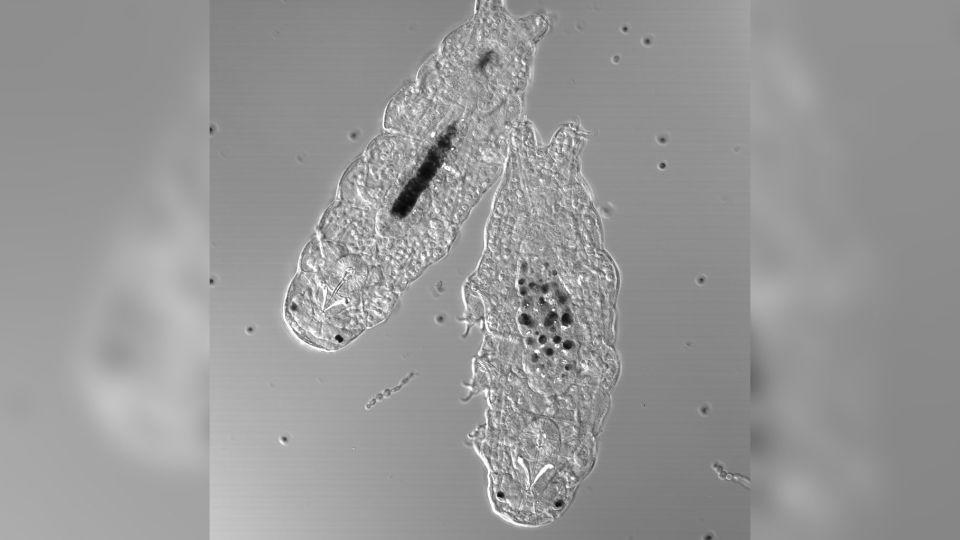Sign up for CNN’s Wonder Theory science newsletter. Explore the universe with news about fascinating discoveries, scientific developments and more.
Tardigrades, also known as water bears, commonly survive in some of the most challenging environments on Earth. The microscopic animals are so special that they have even traveled to the International Space Station for research.
When the going gets tough, the astonishingly strong creatures are capable of going into a form of suspended animation for decades, the so-called ‘tun state’. Now researchers say they have unlocked the mysterious mechanism that activates the animals’ survival mode — and the work could have implications for humans — according to a new study.
Under stress in extreme cold or other harsh environmental conditions, the bodies of tardigrades produce unstable free radicals of oxygen and an unpaired electron, or a reactive oxygen species that can wreak havoc on the body’s proteins and DNA if they build up in excess. (Yes, this oxidative stress is the same physiological event that people experience when they’re stressed and why health experts recommend eating plenty of blueberries and other antioxidants when you’re having a tough week at work.)
The survival mechanism kicks in when cysteines, one of the amino acids that form proteins in the body, come into contact with these oxygen free radicals and become oxidized, the researchers discovered. That process is the signal that lets the tardigrade know it’s time to go into the tun’s protective mode. The free radicals become, as it were, the hammer with which the glass of a fire alarm is broken.
The findings were published Jan. 17 in the journal PLOS One.
The revelation could ultimately help develop materials that can respond to harsh environments like deep space or therapies that can disarm cancer cells, says lead study author Amanda L. Smythers, a postdoctoral fellow at Dana-Farber Cancer Institute and Harvard Medical. School in Boston.

‘A eureka moment’
In unforgiving habitats as varied as Antarctica, mountain peaks and deep-sea vents, tardigrades that encounter extreme temperatures or dehydration will retract their eight arms and reduce the amount of water they store.
The water bears shrink to a quarter of their normal size. The usually linear and somewhat plump-looking invertebrates turn into protective, desiccated balls in the tun state, lying dormant in environments that would kill most other life forms.
Smythers and researchers at the University of North Carolina at Chapel Hill and Marshall University in Huntington, West Virginia, first began looking at this phenomenon thanks to a growing body of literature suggesting that cysteines were involved in initiating the tun process, she said.
“When we looked at the list of all these crazy conditions that tardigrades can survive in – space, in a vacuum, a high salt concentration like when an ocean starts to evaporate – reactive oxygen species were the only thing that really tied all these things together,” said Smythers. “It was actually a bit of a eureka moment.”
Over the past decade, researchers have come to understand that reactive oxygen species, free radicals that were once considered completely “problematic,” says Smythers, “can be really important to our body’s functioning and its ability to adapt to different stresses.” ‘
Previous studies said that instead of the free radicals helping the tun process as protection against stressors, tardigrades protected themselves from free radicals. The body’s production of free radicals, Smythers and her co-authors found, is instead part of the process that helps the tardigrade protect itself by curling into a hard-shelled ball that can withstand extreme heat , cold or other environmental factors.
“We came up with the idea that maybe it’s those species that actually signal to the tardigrades to enter their tun state,” she said.
First an experiment outside the books
Before setting up the longer process in the study, Smythers called on a student to help conduct a quick experiment and test her early hypothesis about reactive oxygen species and their role in initiating vessel formation.


Smythers asked the student to go to a drugstore and get some peroxide – a common free radical. While Smythers watched the experiment on FaceTime, the student dropped some peroxide on a tardigrade to see what would happen.
“Suddenly he started to squeeze in. His paws started to go into his body. It started to shrink. It became the ultimate tun that we know to expect,” Smythers said.
How the secret of tardigrades can help people
The research wasn’t just done to find out how the animals fare in the cruel environments they often live in. Smythers said the findings could help researchers develop materials that can respond to harsh environments – such as developing firefighting equipment that could create protective shielding. shell when conditions become too extreme – or the development of better chemotherapeutic agents to destroy malignant tumors by interrupting the protective measures that make it so difficult to kill cancer cells.
The finding is exciting for Dr. William R. Miller, a research assistant professor at Baker University in Baldwin City, Kansas. Miller, who has studied and written about tardigrades, was not involved in this research.
“That would be fantastic, to find other ways that these mechanisms can be used to control cancer,” Miller said.
Miller said he was impressed by Smythers’ ability to think of ways the tardigrade study could be implemented for cancer research and other areas. He said that it takes another level of mind and thinking to find the translocation of one technique or one combination of things to a very distant technique. We need more of that.”
Jenna Schnuer is an Anchorage, Alaska-based freelance writer, editor and audio producer who focuses (mainly) on science, art and travel.
For more CNN news and newsletters, create an account at CNN.com